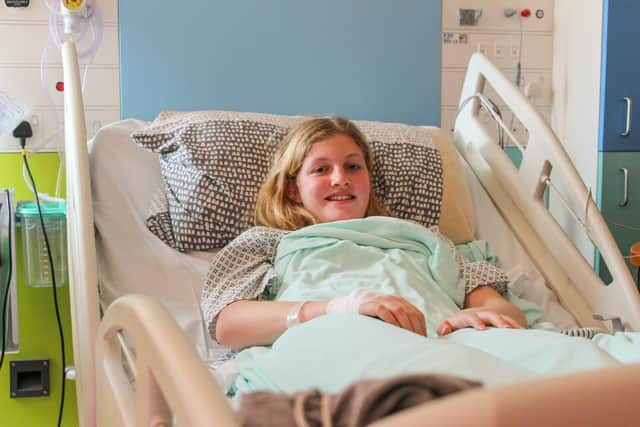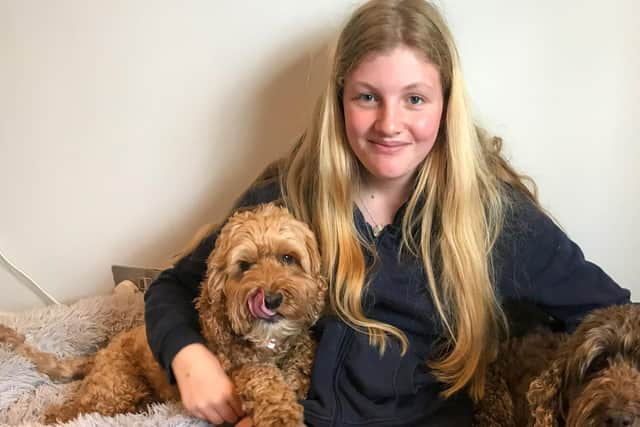World first at Sheffield hospital as young patient has procedure which leaves no scar
and live on Freeview channel 276
Millie, aged 14, from Surrey was the first young patient to have the new Stretta procedure, which will provide a better quality of life for people with gastro-oesophageal reflux disease.
It happens when the food or drink which travels down the oesophagus – or food pipe – comes back up the pipe rather than passing into the intestine. As this food or drink is now mixed with the acid in the stomach, it can cause irritation and inflammation in the throat.
Advertisement
Hide AdAdvertisement
Hide AdThe Stretta procedure sees surgeons using a specialist technique consisting of radiofrequency waves sent directly into oesophageal muscles.


It takes under an hour to do and patients can leave the same day as treatment and leaves no scar on the skin.
Previously, patients who need surgery to help with this type of reflux, would undergo a major operation called a fundoplication – usually carried out using keyhole surgery – which leaves them with three small scars on the abdominal wall and has some side effects in about one in five operations.
Millie’s dad Tim said: “Millie has suffered for three years with reflux. Whenever she eats or drinks she brings back up part of it – which is never comfortable.
Advertisement
Hide AdAdvertisement
Hide Ad“We had tried various medications and saw lots of consultants as her oesophagus had become inflamed before we met Sheffield Children’s Professor Mike Thomson about a year ago. At that point he did various tests and then recommended the Stretta procedure as a solution.


“As it’s not a major procedure, we thought it would be a good option to try next. It’s been performed lots of times on adults with good results.”
Three patients have currently undergone the procedure so far; including Millie, who became the world’s first paediatric patient to receive it.
This method has proved effective over the last twenty years in adult patients and is now undergoing evaluation for children aged 12 and over in Sheffield Children’s with close monitoring approved by the Ethics Board.
Advertisement
Hide AdAdvertisement
Hide AdTim added: “The staff here have been brilliant. They’ve all been so friendly and the hospital has a good feel about it.”
Millie’s procedure was carried out by Prof Thomson and Dr Shishu Sharma, who also perform a number of other specialist gastro surgeries which treat patients from across the UK.
This includes feeding tubes directly into the intestine, endoscopic surgery on inherited bowel problems, and the removal of polyps or growths from anywhere in the gut with specially designed very long endoscopes.
Prof Thomson said: “We are delighted to be able to help young patients access this type of procedure. Not only does this procedure not leave a scar, patients don’t need to stay overnight or in hospital longer than needed.
Advertisement
Hide AdAdvertisement
Hide Ad“At Sheffield Children’s we are continuing to look at new and innovative ways to do procedures and provide treatment to children and young people without the need for formal surgery, and this new technique is a great example of how we can do that.”